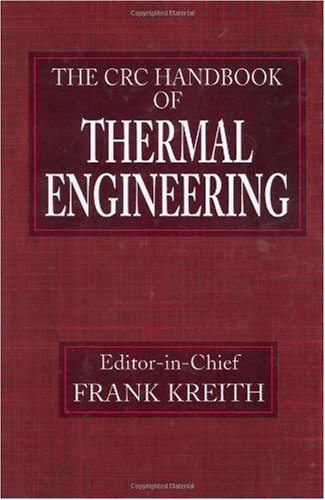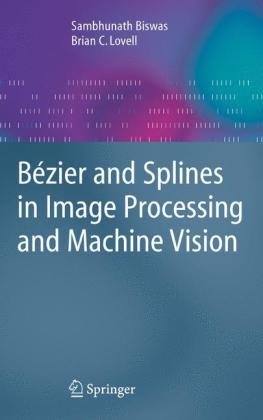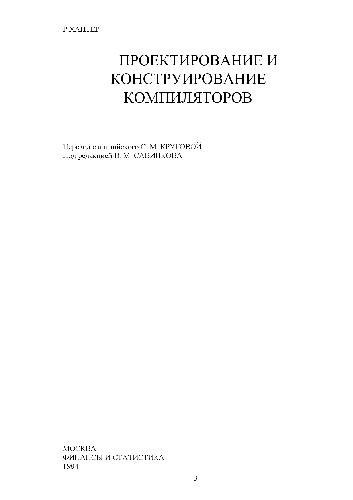Frank Kreith084939581X, 9780849395819
Table of contents :
Contents……Page 0
SECTION 3Heat and Mass Transfer……Page 20
Acknowledgment……Page 4
Introduction……Page 6
Nomenclature……Page 8
Editor-in-Chief……Page 14
Advisory Board……Page 15
Contributors……Page 16
SECTION 5Numerical Analysis and Computational Tools……Page 21
APPENDICES……Page 22
Engineering Thermodynamics……Page 25
Process, Cycle……Page 26
Temperature……Page 27
Work……Page 28
Heat……Page 29
Power Cycles……Page 30
Irreversibilities……Page 31
Carnot Corollaries……Page 32
Carnot Efficiency……Page 33
Entropy……Page 34
Entropy Balance……Page 35
Control Volume Energy Balance……Page 38
Control Volume Entropy Balance……Page 39
Control Volumes at Steady State……Page 40
Solution. The nozzle exit area can be evaluated using Equation 1.20, together with the ideal gas ………Page 43
Internally Reversible Heat Transfer and Work……Page 44
Basic Relations for Pure Substances……Page 46
Example 4……Page 47
Specific Heats and Other Properties……Page 48
Solution. Identifying x, y, z with s, T, and v, respectively, Equation 1.36b reads……Page 49
P-v-T Surface……Page 52
Compressibility Charts……Page 54
Equations of State……Page 59
Gas Mixtures……Page 60
Evaluating Dh, Du, and Ds……Page 61
Solution. With Equation 1.33 and the Maxwell relation corresponding to y(T, v) from Table 1.2, Eq………Page 62
Thermodynamic Data Retrieval……Page 64
Ideal Gas Model……Page 68
Example 8……Page 70
Solution. Using Equation 5¢ of Table 1.8 together with Equation 1.30b,……Page 72
Ideal Gas Mixtures……Page 73
Moist Air……Page 74
Generalized Charts for Enthalpy, Entropy, and Fugacity……Page 75
Multicomponent Systems……Page 78
Chemical Potential……Page 79
Ideal Solution……Page 80
Reaction Equations……Page 82
Solution…….Page 83
Enthalpy of Formation……Page 84
Absolute Entropy……Page 86
Solution. For combustion of liquid octane with the theoretical amount of air, the chemical equati………Page 87
Gibbs Function of Formation……Page 89
Solution. The overall cell reaction is H2 + 1/2 O2 Æ H2O(,), and Equations 1.83 are applicable. S………Page 90
Solution. The reaction of CO with the theoretical amount of dry air to form CO2, CO, O2, and N2 is……Page 91
Environment……Page 93
Control Volume Exergy Rate Balance……Page 94
Chemical Exergy……Page 95
Solution. Equation 1.88 reduces to read……Page 96
Exergetic Efficiency……Page 97
Solution. The exergetic efficiency from Table 1.13 is……Page 98
Introduction to Exergy Costing……Page 100
Solution. Substituting values into Equation 1.93,……Page 101
Rankine and Brayton Cycles……Page 102
Otto, Diesel, and Dual Cycles……Page 104
Carnot, Ericsson, and Stirling Cycles……Page 107
1.7 Guidelines for Improving Thermodynamic Effectiveness……Page 111
1.8 Exergoeconomics……Page 112
Exergy Costing……Page 113
Cost Balance……Page 114
Step 2: Definition of Fuel and Product……Page 115
General Example……Page 116
Exergoeconomic Variables and Evaluation……Page 118
1.9 Design Optimization……Page 119
An Iterative Exergoeconomic Procedure for Optimizing the Design of a Thermal System……Page 120
Case Study……Page 122
First Design Case……Page 123
Second Design Case……Page 124
Additional Iterations……Page 125
Principles of Economic Evaluation……Page 126
Levelization……Page 128
References……Page 129
Fluid Mechanics……Page 134
Hydrostatic Pressure……Page 135
Forces on Plane Surfaces……Page 136
Forces on Curved Surfaces……Page 138
Buoyancy……Page 139
Partially Submerged Body……Page 140
Uniform Linear Acceleration……Page 141
Rigid-Body Rotation……Page 142
Further Information……Page 143
Conservation of Mass……Page 144
Conservation of Momentum……Page 145
Conservation of Energy……Page 146
Solution:……Page 147
Mass Conservation–Continuity Equation……Page 148
Momentum Conservation……Page 149
Analysis of Rate of Deformation……Page 150
Relationship Between Forces and Rate of Deformation……Page 151
Energy Conservation — The Mechanical and Thermal Energy Equations……Page 152
Boundary Conditions……Page 154
Vorticity in Incompressible Flow……Page 155
Stream Function……Page 157
Solution…….Page 158
Further Information……Page 160
General Principles……Page 161
Example 2.3.1: Fully Developed Flow of Water Through a Smooth Round Pipe……Page 162
Algebraic Method……Page 163
Alternative Notations……Page 164
Example 2.3.2: Fully Developed Forced Convection in Fully Developed Flow in a Round Tube……Page 165
Example 2.3.3: Free Convection from a Vertical Isothermal Plate……Page 166
Correlation of Experimental Data and Theoretical Values……Page 169
The Evaluation of n……Page 170
Intermediate Regimes……Page 171
Example 2.3.4: The Pressure Gradient in Flow through a Packed Bed of Spheres……Page 172
The Turbulent Regime……Page 173
Overall Correlation……Page 175
References……Page 176
Basic Computations……Page 177
Fluid Friction……Page 178
Local Losses……Page 179
Pipe Design……Page 181
Pressure Class Guidelines……Page 182
Control Valves……Page 183
Torque……Page 184
Cavitation……Page 185
Transients……Page 186
Check Valves……Page 187
Air Valves……Page 188
Pump Selection……Page 189
Other Considerations……Page 191
Thrust Blocks……Page 192
References……Page 193
Uniform Flow……Page 194
Critical Flow……Page 195
Hydraulic Jump……Page 196
Weirs……Page 197
Gradually Varied Flow……Page 198
Solution……Page 199
References……Page 201
Introduction and Scope……Page 202
Boundary Layer Thickness Definitions……Page 203
Turbulent Boundary Layers……Page 204
Effect of Pressure Gradient……Page 205
Drag……Page 206
Pressure Drag……Page 207
Lift……Page 209
Profile Shaping……Page 210
Role of the Wind Tunnel……Page 211
References……Page 212
Introduction……Page 213
One-Dimensional Flow……Page 214
Normal Shock Wave……Page 216
One-Dimensional Flow with Heat Addition……Page 218
Quasi-One-Dimensional Flow……Page 220
Nozzle Flow……Page 222
Two-Dimensional Supersonic Flow……Page 223
Oblique Shock Waves……Page 224
Thin-Airfoil Theory……Page 226
References……Page 229
Fundamentals……Page 230
Flow Regimes……Page 233
Void Fractions……Page 235
Pressure Drop……Page 238
Minimum Fluidization……Page 239
Pneumatic Conveying……Page 241
References……Page 245
Classification of Non-Newtonian Fluids……Page 246
Constitutive Equations……Page 248
Modified Power Law Constitutive Equation……Page 249
Fully Developed Laminar Pressure Drops for Time-Independent Non- Newtonian Fluids……Page 250
Power Law Fluids……Page 253
Fully Developed Turbulent Flow Pressure Drops……Page 254
Viscoelastic Fluids……Page 256
Fully Developed Laminar Flow Pressure Drops……Page 257
References……Page 258
Introduction……Page 261
Fourier’s Law……Page 262
Plane Wall at Steady State……Page 263
Overall Heat Transfer Coefficient……Page 264
Internal Heat Generation……Page 265
Fins……Page 266
Bodies with Significant Internal Resistance……Page 269
Finite Difference Analysis of Conduction……Page 271
References……Page 273
Introduction……Page 275
Correlations for External Natural Convection……Page 277
Correlations for Open Cavities……Page 279
Heat Transfer in Enclosures……Page 281
Example Calculations……Page 283
References……Page 285
Introduction……Page 286
Flows with Zero Pressure Gradient and Negligible Viscous Dissipation……Page 287
Flows with Pressure Gradient and Negligible Viscous Dissipation……Page 292
Uniform Temperature: Flat Plate with Injection or Suction with External Flows of a Fluid Parallel………Page 293
Flow over Flat Plate with Zero Pressure Gradient: Effect of High-Speed and Viscous Dissipation……Page 294
Flow over Cylinders, Spheres, and Other Geometries……Page 296
Heat Transfer across Tube Banks……Page 298
Example……Page 301
Heat Transfer with Jet Impingement……Page 304
Bibliography……Page 305
References……Page 306
Introduction……Page 307
Heat Transfer Correlations……Page 309
Mixed Convection……Page 313
References……Page 315
Laminar Duct Heat Transfer — Purely Viscous, Time-Independent Non-Newtonian Fluids……Page 316
Turbulent Duct Flow for Purely Viscous Time-Independent Non-Newtonian Fluids……Page 319
Viscoelastic Fluids……Page 320
Free Convection Flows and Heat Transfer……Page 321
References……Page 323
Further Information……Page 324
Blackbody Radiation……Page 325
Radiative Properties of Surfaces……Page 327
View Factors……Page 329
Example 3.3.2……Page 334
Example 3.3.3……Page 335
Radiative Exchange between Opaque Surfaces (Net Radiation Method)……Page 336
Example 3.3.4……Page 337
Example 3.3.5……Page 338
Radiative Properties of Molecular Gases……Page 341
Example 3.3.6……Page 344
Radiative Properties of Particle Clouds……Page 345
Heat Exchange in the Presence of a Participating Medium……Page 346
Example 3.3.7……Page 347
Example 3.3.8……Page 348
Defining Terms……Page 349
References……Page 350
Boiling……Page 352
Pool Boiling……Page 354
Internal Convective Boiling……Page 358
Condensation……Page 362
Defining Terms……Page 366
References……Page 367
Bubbling Fluidized Beds……Page 368
Fast-Circulating Fluidized Beds……Page 371
References……Page 373
Introduction and Overview……Page 374
Melting and Freezing of Pure Materials……Page 376
Some Approximate Solutions……Page 381
Estimation of Freezing and Melting Time……Page 384
References……Page 386
Concentrations, Velocities, and Fluxes……Page 388
Concentrations at Interfaces……Page 390
Definitions of Fluxes and Velocities……Page 392
Mechanisms of Diffusion……Page 393
Species Conservation Equation……Page 395
Steady Diffusion through a Plane Wall……Page 398
Transient Diffusion in a Semi-Infinite Solid……Page 399
Transient Diffusion in Slabs, Cylinders, and Spheres……Page 402
Diffusion in a Porous Catalyst……Page 403
Heterogeneous Combustion……Page 405
Droplet Evaporation……Page 406
Droplet Combustion……Page 407
Mass Convection……Page 408
Low Mass Transfer Rate Theory……Page 409
Dimensionless Groups……Page 410
Analogy between Convective Heat and Mass Transfer……Page 411
Simultaneous Heat and Mass Transfer……Page 412
The Wet- and Dry-Bulb Psychrometer……Page 414
High Mass Transfer Rate Theory……Page 415
Variable Property Effects of High Mass Transfer Rates……Page 416
References……Page 420
Introduction……Page 423
Types and Description……Page 425
Exchanger Heat Transfer and Pressure Drop Analysis……Page 433
Heat Transfer and Flow Friction Correlations……Page 447
Exchanger Design Methodology……Page 452
Fouling in Heat Exchangers……Page 460
Nomenclature……Page 465
References……Page 467
Nomenclature of Heat Exchanger Components……Page 470
Construction Features……Page 471
Principles of Design……Page 475
Approximate Design Method……Page 478
Solution…….Page 483
References……Page 486
Coupling of Temperature History to Rate Processes……Page 488
Tissue Thermal Transport Properties……Page 489
Measurement of Thermal Conductivity and Diffusivity……Page 490
Estimation of Heat Transfer Coefficient……Page 494
Temperature-Dependent Thermal Properties……Page 496
Effect of Blood Flow on Temperature……Page 499
Limitations of Pennes’ Model……Page 501
Continuum Models……Page 502
Vasculature-Based Models……Page 503
Thermal Measurements of Perfusion……Page 506
Physiological Processes of Thermoregulation……Page 510
Thermoregulatory Processes……Page 511
Wissler Model of Human Thermoregulation……Page 512
Heat Generation Modalities……Page 514
Physiologic Effects of Local Heating……Page 515
Theory of Rate Process Descriptions……Page 516
Application of Kinetic Formulations in Thermal Damage Studies……Page 520
Histologic Markers of Thermal Damage……Page 524
Damage Rate Process Coefficients……Page 528
Tissue Effects: Subzero Temperatures……Page 532
Cryopreservation……Page 533
Cryosurgery……Page 540
References……Page 541
Appendix A……Page 551
Appendix B……Page 554
Introduction……Page 562
Gas Conduction and Convection……Page 563
Combined Thermal Conductivity……Page 564
Insulation Systems (Nonvacuum and Vacuum)……Page 565
Commercial Fibrous and Solid Insulation Systems for Moderate and High Temperatures……Page 567
Insulation Application……Page 569
Vacuum Maintenance……Page 570
References……Page 572
Types of Energy Audits……Page 574
Detailed Energy Audit……Page 575
Step 2:Walk-Through Survey……Page 576
Building Envelope……Page 577
HVAC Systems……Page 580
Indoor Water Management……Page 581
Case Study……Page 582
Step 2:On-Site Survey……Page 583
Step 3:Energy Use Baseline Model……Page 585
Step 4:Evaluation of Energy Conservation Opportunities (ECOS)……Page 586
Recommendations……Page 587
Regression Models……Page 588
References……Page 589
Positive Displacement Compressors and Application to Refrigeration and Air Conditioning……Page 591
Compressor Type by Construction……Page 592
Compressor Type by Kinematic Linkages……Page 595
Estimation of Heat Transfer Coefficient……Page 611
Appendix A……Page 1
Centrifugal Compressors……Page 604
Axial Flow Compressors……Page 609
Exchanger Heat Transfer and Pressure Drop Analysis……Page 627
Packing Thermal Performance……Page 629
Thermal-Hydraulic Design of Cooling Towers……Page 633
Cooling Tower Behavior……Page 635
Cooling Demand Curves……Page 637
References……Page 638
Casting……Page 641
Freezing of an Alloy……Page 642
Secondary Processes (Shape Casting)……Page 645
Heat Input……Page 646
Fusion Zone……Page 647
Heat-Affected Zone……Page 648
Thermal History……Page 650
Moving Point Source of Heat……Page 652
Moving Line Source of Heat……Page 653
Summary of Thermal Effects……Page 654
Hardening Heat-Treating Processes……Page 655
Machining……Page 659
Deformation Processing……Page 660
Thermoplastics Processing……Page 661
Thermal Spray Deposition……Page 662
References……Page 663
Introduction……Page 664
Temperature-Enthalpy Diagram……Page 665
Software……Page 666
Optimization Variables and Heat Exchanger Network Design Philosophy……Page 667
Targets for Optimization Parameters……Page 673
Capital Cost Targets……Page 676
Significance of the Pinch Point……Page 680
Network Design……Page 682
Pinch Point and Network Design……Page 684
Example……Page 687
Selection of Utility Loads and Levels……Page 688
Data Extraction……Page 691
References……Page 692
Air Liquefaction……Page 696
Hydrogen Liquefaction……Page 698
Helium Liquefaction……Page 699
Joule-Thomson Cryocooler……Page 700
Stirling Cryocooler……Page 701
Vuilleumier (VM) Cryocooler……Page 702
Gifford-McMahon (GM) Cryocooler……Page 703
Magnetic Refrigerator……Page 704
Dilution Refrigerator……Page 705
Cryogenic Heat Exchanger Types……Page 706
Cryogenic Heat Exchanger Design Problems……Page 708
Regenerators……Page 709
Cryogenic Insulation……Page 710
References……Page 712
Properties of Moist Air……Page 715
Thermodynamic Properties of Moist Air……Page 716
Psychrometric Chart……Page 719
Thermal Comfort Conditions……Page 726
Cooling Load……Page 727
Heating Load……Page 730
Carnot Refrigeration Cycle……Page 733
Vapor Compression Cycle……Page 734
Compressors……Page 736
Absorption Cycle……Page 740
Refrigerant Selection……Page 741
All-Air Systems……Page 745
All-Water Systems……Page 747
References……Page 748
Introduction……Page 750
Basic Concepts……Page 751
Objective Function……Page 752
Constraints……Page 753
Operating Conditions Vs. Hardware……Page 756
Calculus Methods……Page 757
Example……Page 760
Search Methods……Page 761
Linear and Dynamic Programming……Page 775
Geometric Programming and Other Methods……Page 776
Optimization of Thermal Systems……Page 780
Different Types of Thermal Systems……Page 781
Examples……Page 782
Conclusions……Page 785
References……Page 786
Introduction……Page 788
Single-Phase Forced Convection……Page 790
Active and Compound Techniques for Single-Phase Forced Convection……Page 793
Pool Boiling……Page 794
Convective Boiling/Evaporation……Page 795
Vapor-Space Condensation……Page 796
References……Page 797
Introduction……Page 799
Heat Transfer Limitations……Page 800
Effective Thermal Conductivity and Heat Pipe Temperature Difference……Page 803
Design Example……Page 804
References……Page 809
Spray Characterization……Page 811
Atomizer Design Considerations……Page 812
Atomizer Types……Page 813
References……Page 819
Heating Process and Methods……Page 820
Cooling Process and Methods……Page 821
Forced-Air Cooling……Page 822
Hydraircooling……Page 823
Vacuum Cooling……Page 824
Cool and Cold Storage……Page 825
Refrigerated Transport……Page 826
Moisture Loss (Transpiration)……Page 827
Cooling Process Parameters……Page 828
Fourier-Reynolds Correlations……Page 829
Cooling Heat Transfer Parameters……Page 830
Effective Nusselt-Reynolds Correlations……Page 835
References……Page 836
Introduction……Page 839
Simulation Hierarchy for Solid-Phase Heat Conduction……Page 843
Basic Properties of Phonons……Page 844
Basic Properties of Electrons in Metals……Page 851
Transport Theory for Phonons and Electrons……Page 853
Moments of the Boltzmann Equations……Page 857
Diffusion Theory……Page 860
Thermal Conduction Properties of Electronic Films……Page 861
Definitions of the Effective Thermal Conductivities in Films……Page 864
Single-Crystal Semiconducting Films and Superlattices……Page 865
Polycrystalline Dielectric and Semiconducting Films……Page 870
Amorphous Oxide and Organic Films……Page 871
Interface Resistance……Page 874
Thin-Film Thermal Properties……Page 875
Temperature Fields in Devices……Page 879
Summary……Page 881
References……Page 882
Material Limits……Page 887
Impact on Performance……Page 888
Thermal Characteristics of Printed Circuit Boards (PCB)……Page 889
Thermal Characteristics of Electronic Packages……Page 893
Materials and Properties……Page 894
Understanding Basic Semiconductor Thermal Parameters……Page 895
Types of Thermal Interface Materials……Page 898
Understanding Temperature Limits……Page 900
Casing Materials……Page 903
Typical Heat Transfer Schemes……Page 904
Thermal Management: Some Test Cases……Page 905
Impact of Temperature on Handheld Product Reliability……Page 906
Acceleration Transforms……Page 910
Understanding the Environment……Page 912
Typical Heat Transfer Methods……Page 913
Impact of Equipment Location……Page 914
Fan Selection……Page 916
References……Page 917
Selected U.S. Electronic Thermal Management Patents……Page 919
Restriction Flow Meters for Flow in Ducts……Page 976
Orifice Plates……Page 978
Flow Nozzles……Page 979
Venturi Meters……Page 980
Rotameters……Page 981
Turbine Flow Meters……Page 983
Vortex Shedding Meters……Page 984
Ultrasonic Flow Meters……Page 985
Coriolis Meters……Page 986
Pressure Probes……Page 987
Hot-Wire Anemometry……Page 990
Equations Governing Hot-Wire Anemometry……Page 991
Probe Design……Page 992
Multicomponent Probes……Page 993
Directional Response……Page 994
Laser Doppler Anemometry……Page 995
Principle of Operation……Page 996
Particle Image Velocimetry……Page 999
Viscosity Measurements……Page 1001
References……Page 1002
Nomenclature……Page 1005
Introduction……Page 1006
AI and Its Scope……Page 1007
Heat Exchangers……Page 1008
Artificial Neural Network……Page 1009
Methodology……Page 1010
Application to Compact Heat Exchangers……Page 1014
Thermal System Dynamics and Control……Page 1023
Additional Applications in Thermal Engineering……Page 1027
General Discussion……Page 1029
Genetic Algorithms……Page 1031
Methodology……Page 1032
Applications to Compact Heat Exchangers……Page 1034
Additional Applications in Thermal Engineering……Page 1037
Concluding Remarks……Page 1039
References……Page 1040
5.1 Computer-Aided Engineering (CAE)……Page 1048
Approximate Solutions to a One-Dimensional Heat Equation……Page 1049
The Crank-Nicolson Algorithm……Page 1051
A Steady-State Problem — An Elliptic PDE……Page 1053
Some Iterative Methods for Linear Equations……Page 1054
Line (or Block) G-S and SOR Iteration……Page 1057
The Dirichlet Boundary Condition……Page 1058
Conclusions on Direct and Iterative Methods……Page 1060
FEM Concept……Page 1061
Weighted Integrals and Weak Forms of the Heat Equation……Page 1062
A Simple Example of the FEM……Page 1064
Quadratic Triangular Element……Page 1067
Computing the Stiffness Matrix……Page 1069
Integration over the Standard Triangle……Page 1070
Some Rectangular Elements……Page 1071
The Serendipity Element……Page 1072
Three-Dimensional Elements……Page 1074
Integration in Three Dimensions……Page 1076
Line Integral in Two Dimensions……Page 1077
Surface Integral in Three Dimensions……Page 1078
Time-Dependent Problems……Page 1079
Variational Forms of Elliptic Problems……Page 1081
Error Estimates……Page 1082
5.4 Boundary Element Method……Page 1084
BEM in Two Dimensions……Page 1086
Mixed Boundary Value Problem……Page 1088
A Numerical Example in Two Dimensions……Page 1089
More Accurate Integrations……Page 1090
Three-Dimensional Problems……Page 1092
General Purpose Interactive Mathematical Software……Page 1093
Major Engineering Finite Element Packages……Page 1094
References……Page 1095
Appendices……Page 1098
Symbols and Units:……Page 1099
Part a. Ideal Gas Properties of Nitrogen, N2……Page 1101
Symbols and Units:……Page 1107
Symbols and Units:……Page 1108
Part a. Temperature Table……Page 1109
Part b. Pressure Table……Page 1111
Symbols and Units:……Page 1112
Part a. SI Units……Page 1127
Part b. English Units……Page 1129
Symbols and Units:……Page 1132
Part a. SI Units……Page 1133
Appendix C. Properties of Solids……Page 1134
Part a. Pure Metals……Page 1135
Part b. Commercial Metals and Alloys……Page 1136
Definitions of SI Base Units……Page 1137
SI Derived Units with Special Names and Symbols……Page 1138
Conversion Factors — Metric to English……Page 1139
Conversion Factors — General……Page 1140
Conversion of Temperatures……Page 1141







Reviews
There are no reviews yet.